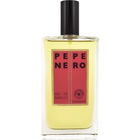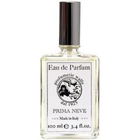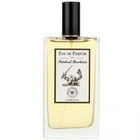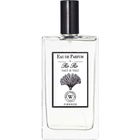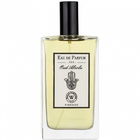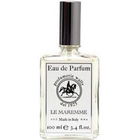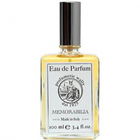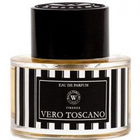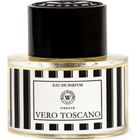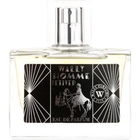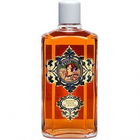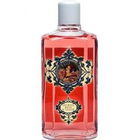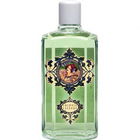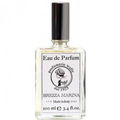
FvSpee
323 Reviews
Translated · Show original

FvSpee
Top Review
40
Neukölln 22: Frottage
It is often claimed that people in the Middle Ages did not wash themselves. I think if we modern folks were thrown back in time to a marketplace in Cologne in the year 1300, it would take us a while for our olfactory system to adapt enough that we could stop gagging. And the idea that one could change underwear more frequently than once a week is probably not much older than 100 years.
However, the notion of a lack of personal hygiene is not entirely accurate. In the High Middle Ages, people in Central European cities actually bathed a lot and enjoyed it, similar to the Roman antiquity, specifically in public bathhouses. Some of these were "bathhouses," but in the majority, people really did bathe. However, even in the serious category, there was also chatting, drinking wine, and playing dice.
The church did not quite approve of all this, but that did not pose much of a hindrance. Until about the Great Plague of 1348-1350, which nearly halved the population of Europe. While they did not have a clear understanding of bacteria and fleas back then, there was a vague sense that such a plague thrives when people are closely packed together. Today, swimming pools are only temporarily closed, but back then (since then), bathing was generally considered harmful to health. You could catch the plague from it.
But still, people did not just stink like ferrets. They rubbed themselves down. Themselves. Or each other. Frottage. With damp cloths, for example. And this went on for a really long time. In the recently published book by Edition Nez Culture about Colognes (which I reviewed on the blog a week ago), it states that even in the 1960s in France, only one in three apartments, whether in the city or the countryside, had a bathroom. If there was running water in the apartment at all, it was in the kitchen. People typically bathed once a week or once a month outside the home, and on the other days: a cat wash between pots and pans.
Or frottage. Often with cloths that were moistened not with water, but with Eau de Cologne. The question of whether it was part of childhood memories to be rubbed down by parents with 'Bien-Etre' or 'Mont-St-Michel' (both Colognes that still exist today) was the precursor to Coke-or-Pepsi, Nutella-or-Nudossi, and Apple-or-Windows.
Understanding these circumstances also makes it clearer why in many countries, Colognes are still sold today in liter bottles or even five-liter canisters and where the term 'Washing Eau de Cologne' comes from.
Wally Colonia Classica is an Italian traditional fragrance, about 100 years old, that is sold exclusively in liter bottles and for little money. In the 'Colonial Goods' line, I have already shared everything I can report about the two sister scents 'Pelle di Spagna' and 'Colonia Fougère' with the readers, so I will limit myself to a few words about the scent itself:
Colonia Classica is, in the best sense of the word, an unobtrusive cologne, where one can easily imagine how it was used in the manner described above. It has nothing perfumey about it, but simply smells fresh and straightforward. It is not overly soapy or aggressively clean either.
When I recently described the Turkish Duru as a Plain Vanilla Cologne, it was a tenor Plain Vanilla. This one is a baritone Plain Vanilla Cologne: straightforward, unobtrusive, but a notch deeper. Specifically: The - with under an hour of longevity quite fleeting - scent is balanced between lemony and orangey notes, but from both sides, the darker notes prevail, with a slight orange overtone. This aligns with the fragrance pyramid, where bitter orange and two types of sweet oranges plus tangerine are mentioned, on the other side, twice lemon and bergamot.
The bergamot seems to be lightly dosed, neroli is completely absent, making the scent far from the beloved and hated 4711 sound: Simply a nice, clean, slightly dark orange-lemon water.
However, it is not overly clear or bright-crystalline (that would not be the Wally DNA, as far as I have understood the brand): To keep it from getting boring, especially in the dry down, a herbal and, hmm, ambery (but more in the sense of "amber-colored" and "shadowy" than it actually smells like amber or ambra) counterpart comes into play, for which I would like to attribute the vertical of speik lavender/rosemary/pomegranate.
Conclusion: A wonderful simple, dark citrusy, and slightly herbal everyday cologne (even today, where the shower has been invented and frottage has lost its innocence) and: super classica!
However, the notion of a lack of personal hygiene is not entirely accurate. In the High Middle Ages, people in Central European cities actually bathed a lot and enjoyed it, similar to the Roman antiquity, specifically in public bathhouses. Some of these were "bathhouses," but in the majority, people really did bathe. However, even in the serious category, there was also chatting, drinking wine, and playing dice.
The church did not quite approve of all this, but that did not pose much of a hindrance. Until about the Great Plague of 1348-1350, which nearly halved the population of Europe. While they did not have a clear understanding of bacteria and fleas back then, there was a vague sense that such a plague thrives when people are closely packed together. Today, swimming pools are only temporarily closed, but back then (since then), bathing was generally considered harmful to health. You could catch the plague from it.
But still, people did not just stink like ferrets. They rubbed themselves down. Themselves. Or each other. Frottage. With damp cloths, for example. And this went on for a really long time. In the recently published book by Edition Nez Culture about Colognes (which I reviewed on the blog a week ago), it states that even in the 1960s in France, only one in three apartments, whether in the city or the countryside, had a bathroom. If there was running water in the apartment at all, it was in the kitchen. People typically bathed once a week or once a month outside the home, and on the other days: a cat wash between pots and pans.
Or frottage. Often with cloths that were moistened not with water, but with Eau de Cologne. The question of whether it was part of childhood memories to be rubbed down by parents with 'Bien-Etre' or 'Mont-St-Michel' (both Colognes that still exist today) was the precursor to Coke-or-Pepsi, Nutella-or-Nudossi, and Apple-or-Windows.
Understanding these circumstances also makes it clearer why in many countries, Colognes are still sold today in liter bottles or even five-liter canisters and where the term 'Washing Eau de Cologne' comes from.
Wally Colonia Classica is an Italian traditional fragrance, about 100 years old, that is sold exclusively in liter bottles and for little money. In the 'Colonial Goods' line, I have already shared everything I can report about the two sister scents 'Pelle di Spagna' and 'Colonia Fougère' with the readers, so I will limit myself to a few words about the scent itself:
Colonia Classica is, in the best sense of the word, an unobtrusive cologne, where one can easily imagine how it was used in the manner described above. It has nothing perfumey about it, but simply smells fresh and straightforward. It is not overly soapy or aggressively clean either.
When I recently described the Turkish Duru as a Plain Vanilla Cologne, it was a tenor Plain Vanilla. This one is a baritone Plain Vanilla Cologne: straightforward, unobtrusive, but a notch deeper. Specifically: The - with under an hour of longevity quite fleeting - scent is balanced between lemony and orangey notes, but from both sides, the darker notes prevail, with a slight orange overtone. This aligns with the fragrance pyramid, where bitter orange and two types of sweet oranges plus tangerine are mentioned, on the other side, twice lemon and bergamot.
The bergamot seems to be lightly dosed, neroli is completely absent, making the scent far from the beloved and hated 4711 sound: Simply a nice, clean, slightly dark orange-lemon water.
However, it is not overly clear or bright-crystalline (that would not be the Wally DNA, as far as I have understood the brand): To keep it from getting boring, especially in the dry down, a herbal and, hmm, ambery (but more in the sense of "amber-colored" and "shadowy" than it actually smells like amber or ambra) counterpart comes into play, for which I would like to attribute the vertical of speik lavender/rosemary/pomegranate.
Conclusion: A wonderful simple, dark citrusy, and slightly herbal everyday cologne (even today, where the shower has been invented and frottage has lost its innocence) and: super classica!
27 Comments




 Top Notes
Top Notes  Brazilian orange
Brazilian orange Calabrian bergamot
Calabrian bergamot French spike lavender
French spike lavender Sicilian lemon
Sicilian lemon Heart Notes
Heart Notes  Bitter orange
Bitter orange Italian mandarin orange
Italian mandarin orange Tunisian rosemary
Tunisian rosemary Base Notes
Base Notes  Paraguayan pomegranate
Paraguayan pomegranate
